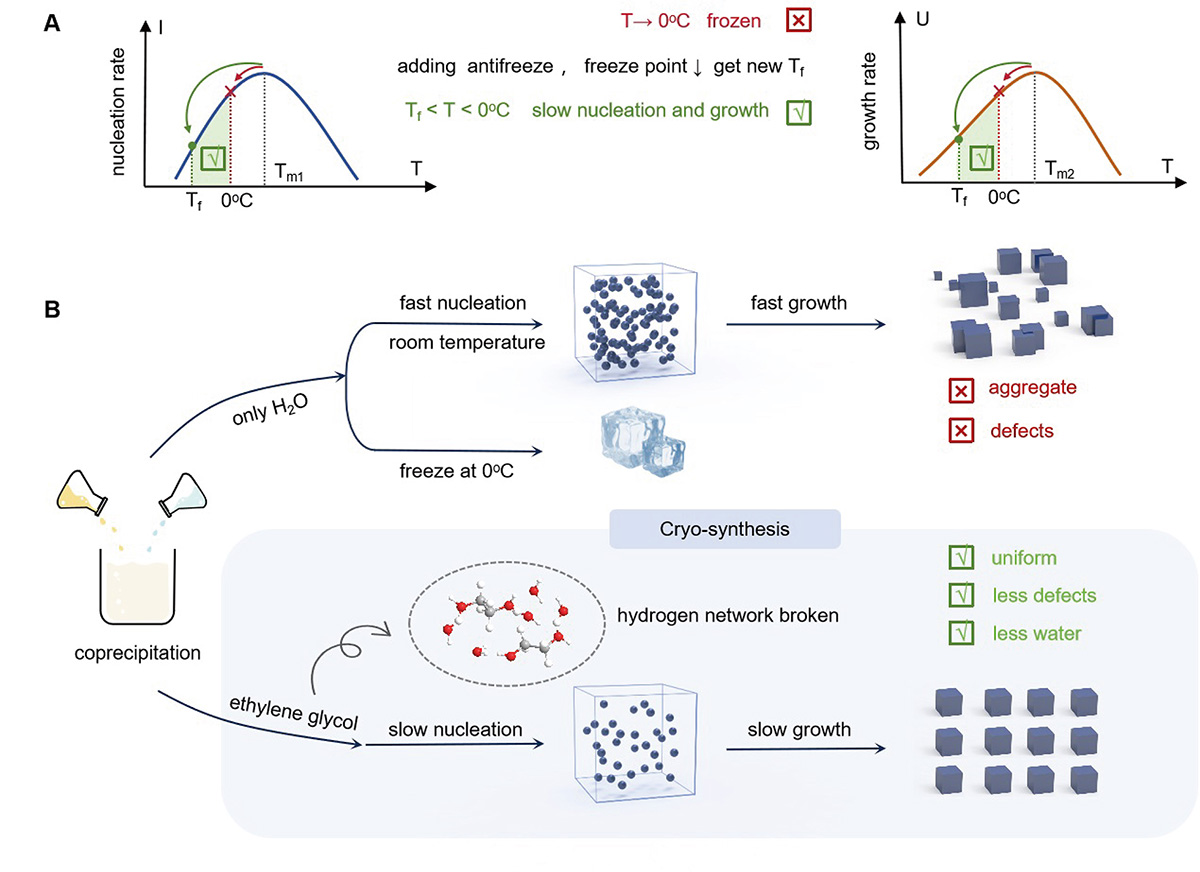Figure 1

Download original image
Schematic illustration of nucleation-growth mechanisms in Prussian blue analogues (PBAs) synthesis and their temperature-dependent crystallization control. (A) PBA’s nucleation and growth kinetics are largely governed by temperature, where Tf and Tm1/Tm2 represent the solidification temperature (addition EG) and the fastest rate of nucleation/growth temperature of the precursor solution. (B) The scenarios of PBA synthesis under different temperatures. Conventional synthesis routes exhibit limited control over particle size distribution due to rapid nucleation under ambient conditions. Thermodynamically favored growth leads to particle aggregation with heterogeneous size distribution at room temperature (upper panel). The sub-zero synthesis cannot be achieved due to the freezing of the aqueous precursor solution (middle panel). Our developed cryo-synthesis approach introduces hydrogen-bond disrupting additives, achieving monodisperse nanocrystals with enhanced crystallinity (lower panel).
Current usage metrics show cumulative count of Article Views (full-text article views including HTML views, PDF and ePub downloads, according to the available data) and Abstracts Views on Vision4Press platform.
Data correspond to usage on the plateform after 2015. The current usage metrics is available 48-96 hours after online publication and is updated daily on week days.
Initial download of the metrics may take a while.

